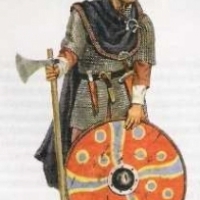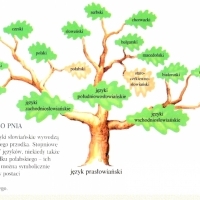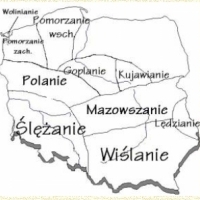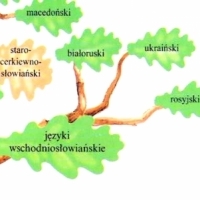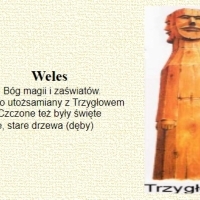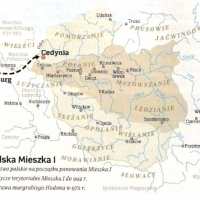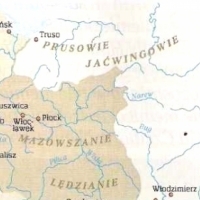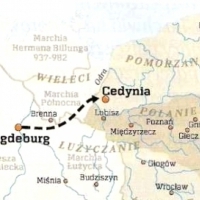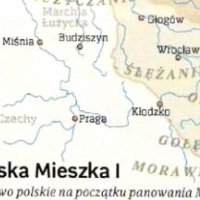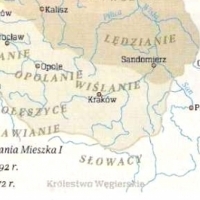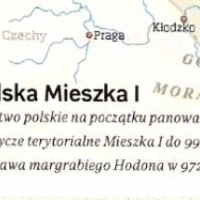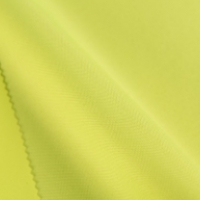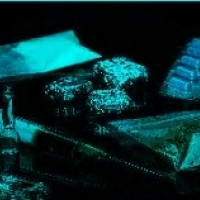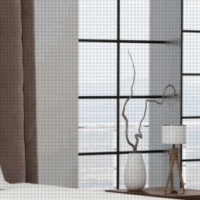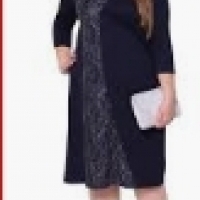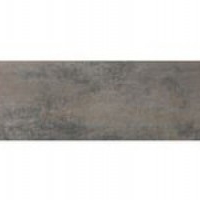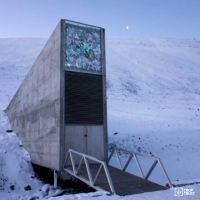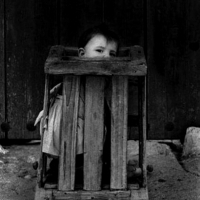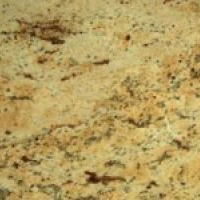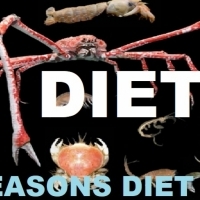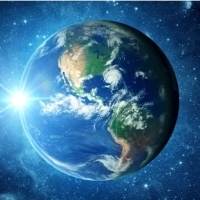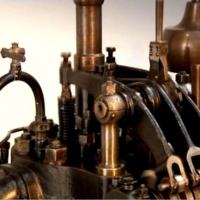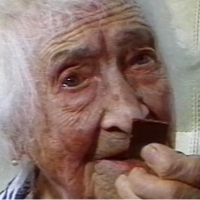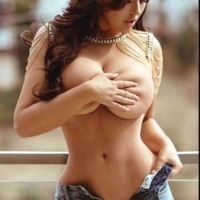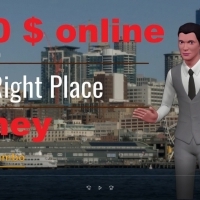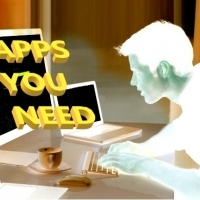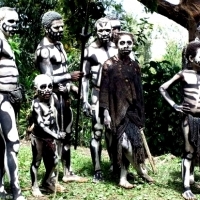0 : Odsłon:
The first Piasts:
Prince Siemowit
(Ziemowit)
According to the records of the 12th century
dynastic tradition, son of Piast. Prince Polański.
He lived and ruled in the second half of the 9th century
There are assumptions that it widened
borders of the Polan state.
Prince Lestek
Born probably in the 70s of the 9th century, son of Siemowit. Prince Polański. From the turn of the 9th and 10th centuries, he was the ruler of the mighty state of Polans, known abroad as Sclavinia or the "state of Gniezno". He must have been a ruler with a strong individuality, since still in the middle of the The 10th century inhabitants of the Polanie state were referred to as Lestków or Lestkowice. He probably died in the 30s of the 10th century.
Prince Siemiomysł
Born probably in the early 10th century
son of Lestek. Prince of Polański.
He ruled from around 930 to around 960.
Probably widened yet
the borders of the Polan state taking over -
perhaps - Lubusz Land,
which led to a conflict with
the German state.
Presumably mastered as well
Gdańsk Pomerania.
He died around 960.
Prince Polański Siemiomysł with
a bodyguard team.
The first state organizations in Poland:
a) The Vistula State with its center in Krakow fell quickly, and its prince found
the captivity in which he was to be baptized
b) The state of clearings with a center in Gniezno. Neighboring tribes became dependent on each other, After they had taken over Kujawy and Mazovia
Part of Pomerania also fell into their hands. They built new castles in these lands, which became centers of power
Opole mentioned above. This expansion was made possible by the princely party maintained at the expense of the prince.
What else do we know?
The agricultural population made a living by farming and beekeeping. From the 10th century, honey was obtained in apiaries using the breeding method (beehives). Previously, by collecting wild bees from the nests. Honey was a valuable interchangeable commodity and, together with amber, it caused an influx of merchants from the south. The glades took their name from the fields that predominated in their tribal territory. In the first centuries of the existence of the Polish state, major changes took place in the way of farming. A new method of cultivating the land, called three-field cultivation, began to be used. It consisted in the fact that the land on the farm was divided into three parts, two of them were sown with cereals (spring and winter), while the third part was not cultivated (fallow), so that it could produce better crops the following year. Thanks to the application of this method, higher yields were obtained. Agricultural tools were also improved. A wooden plow with iron fittings was used, which improved the plowing quality. A significant change was the use of a plow, harrow and scythe in the 12th century. Water mills were built along the rivers to improve the processing of grain.
Settlement development:
Many inhabitants of overpopulated Western Europe believed that the undeveloped areas in its eastern part were an attractive settlement area. The arriving people brought to Poland the laws that were in force in their former homelands. New villages and towns were established in a different way than before. The settler concluded an agreement with the landowner and, pursuant to it, was exempted from benefits for a period of several or even several years for development. It was the so-called slow. After this time, the settlers had to pay the landowner a financial rent. This development of settlement was very favorable, as new settlements were often established on lands that had not been used for agriculture so far. In Poland, the most numerous group of newcomers were Germans, therefore the new settlement system was referred to as German law.
Improvements in farming methods have increased food production, thus allowing more people to be fed. Thanks to the surpluses obtained, the peasants who bought handicraft products became richer. Landowners also used their rent money to buy goods. This resulted in the development of artisanal production and trade.
Craftsmen producing the same products organized themselves into guilds. They supervised the volume and quality of production, and set the prices of the products. Not only useful goods were produced, but also luxury items. Gold deposits were discovered in Silesia, which contributed to the development of this region. The development of trade and the separation of crafts from agriculture led to the flourishing of cities in the future. It was also favored by the privileges granted by the rulers. In the cities, the power was exercised by the self-government composed of the mayor and the city council.
Prince Mieszko I.
Born around 930, son of Siemomysł. The first historical ruler of Poland. During his reign, he doubled the area of lands received from his father. He began his reign as the ruler of Polans, Goplan, Mazovia and Lędzians. Perhaps the land of Lubuskie and Gdańsk Pomerania were also within the state borders. Approx. In 964 he fought with the Wielety family for Western Pomerania. In 965, he allied with the Czechs and married the Czech princess Dobrawa. In 966 he was baptized with the entire court. Two years later, a missionary bishopric was established in Poznań. In 967 he defeated Wielet and took over part of Pomerania. In 972 he defeated Cedynia - it was the army of margrave Hodon, with whom he competed in the fight for Western Pomerania. In 979 he repulsed the expedition of Emperor Otto II to Poland. After Dobrawa's death in 977, around 980, he married Oda, the daughter of margrave Dytryk. Approx. In 990, there was a conflict with the Czechs, which ended with the capture of Silesia and the land of Wiślanie by Mieszko. At that time, in order to strengthen the Polish state, he left his possessions under the protection of the papacy, issuing a document beginning with the words "Dagome iudex". During his reign, the ethnically Polish lands were united into one state.
In the years 928-940, the German kings began a decisive crackdown with the Polabian Slavs. They dealt with the Sorbs the Lusatians most quickly. Vidukind (Saxon chronicler) wrote that around 940 all the Slavic tribes between the Elbe and the Oder recognized the authority of King Otto I (936-973) and paid him tribute. In 950, Otto I forced the Czech prince Bolesław to do it. In the middle of the 10th century, Otto I (then already the emperor) dealt with Italian affairs, and the expansion into the Slavic lands was taken over by Hermann Billung and Geromargrabia maMarchii Wschodnia. Gero treacherously murdered thirty Slavic chieftains during a feast, thus subjugating the Serb tribes and strengthening German rule in the areas between the Solawa and the Oder. Only two tribes remained in the north: Obodrites who converted to Christianity and those who worshiped Swarożyc. In 954, the Magyars began to invade German territory. Then both tribes revolted and defeated the Saxons several times. Otto put an end to the invasions, defeating the Magyars on the Lech River, and then on the Slavs on the Rzeknica. After these events, Gedro completed the work by subjugating the Slavic lands, up to the Odra River. On the line of the Odra River, however, it has already encountered decisive resistance from the Polans. The creators of the Polish state were Polanie, people living in the areas of today's Greater Poland. The Piast dynasty ruled there, which subjugated the neighboring tribes of Goplan and Mazovia. In 966, the Polański prince Mieszko I was baptized by the Czech mediation and married Dobrawa, the daughter of the Czech prince Bolesław I. Mieszko continued his expansion in Pomerania. His actions disturbed Wielet, who under the command of the German Wichman attacked Mieszko I twice. It was in 963 and 967. Mieszko I paid tribute to the German emperor from the seized territories of the Oder and Pomeranian regions, which protected him against attacks by border margraves.
Battle of Cedynia:
The forces of both sides were probably equal (they did not exceed a few thousand), although Hodon probably had more heavy cavalry. On the other hand, Mieszko's strong point was the archers and mobile infantry well prepared to fight on uneven terrain.
The Polish prince, with some forces (probably with the majority of the cavalry), went to the Odra river with the intention of defending the crossing (how long he intended to keep it), while the rest of his army was under the command of his brother Czcibor, and not far from the town of Cedynia (Cidini In the first phase of the battle, Hodon broke through the Oder with his army.
The margrave chase after Mieszko, who was heading towards Cedynia.
When Hodon and Zygfryd of Walbeck, convinced of their victory, prepared to storm the city where Mieszko's army had taken refuge, the sound of a horn sounded and they fell on them from the east, from a wooded hill (and possibly from other sides), led by Czcibor. At that time, there was a counterattack from the stronghold and the Marches' army was caught in pincers. The battle turned into slaughter, and only a handful of Germans (led by Hodon and Zygfryd) survived and managed to get out of the encirclement and rush to the left bank of the Oder.
German tradition grants Czcibor the main laurel for victory in the battle of Cedynia, following the chronicler Thietmar,
which was supposed to save Mieszko from defeat. Many researchers, however, tend to consider the battle of Cedynia as Mieszko's planned maneuver, the aim of which was to drag the Germans into an ambush near Cedynia. The fact that part of the army was left in the interior of the country, as well as the popularity of this maneuver in the early Middle Ages among the Slavs, would testify to this. Also, Mieszko's common sense would tell him to see his chances rather in playing the battle on less even terrain. This does not mean, however, that Mieszko could not assume the possibility of an effective defense on the Odra River, and that Czcibor's retreat was to protect him in the event of failure.
One of the most important sections, where the aspirations of the Frankish monarchy were manifested, was the territory of the Polabian Slavs. Already at the end of the 6th century, the western borders of a compact Slavic settlement reached the Elbe and stabilized on that river in the immediate vicinity of such Germanic peoples as the Thuringians, Saxons and Danes. Smaller groups of Slavs crossed to the west bank of the river and stopped deep in the Germanic lands.
In Carolingian writings we sometimes find clear traces of the settled west quite far Slavic groups. From the document of Emperor Louis the Pious, issued to the bishop of Wtirzburg in the years 826-830, and referring to the events of the times of Charlemagne, we find a mention of two Slavic tribes, here called Moinvinidi and Radanzwinidi, living in the diocese of Wiirzburg between the rivers Main and Radenca. These Slavs were baptized and it is recommended in the document to build churches for them.
The document of the Bavarian prince Tassilon, issued in 777 for the monastery in Kremsmtinster, tells about granting the monastery a tribute from Slavic settlements located in upper Austria near the present-day city of Steyer. Speech is there, among others. about three Slavic zupans (princes) whose names are Taliup, Sparuna and Fisso. The yearbooks of the monastery in Fulda also mention numerous groups of Slavs living next to the Franks in various towns belonging to the monastery (including Giesa, Sa1zungen, Hagen, Sommerda and others) and paying due tribute.
The above-mentioned groups of the Slavic population lived either in dense tribal groups under the leadership of local princes, or dispersed in settlements next to the Germanic population. These people were not able to maintain their political separateness, and only for a long time they retained their ethnic, linguistic and moral separateness. Nor did she pose any threat to the Franks. She was gradually going through the process of assimilation, which was mainly due to her inclination to accept Christianity. A serious problem for the Frankish monarchy was not the far west and scattered Slavic settlements, but their compact settlement on the land that the Slavs used to consider as their own, on the right bank of the Elbe and Solava. As early as the beginning of the 7th century, the Franks were making efforts to subjugate individual tribes or tribal unions.
We learn about it from the news about the prince of the Serb tribal union, Derwan, mentioned several times,
in the 30s of the 7th century. From the chronicles of Fredegar it appears that until the defeat of the Franks at Wogastisburg, Derwan was a tributary of this country. Numerous tribes inhabiting the right bank of the Elbe are already mentioned in the oldest Frankish mentions in the form of three groups called: Obodritami, Wieletami and Serbami. The individual relationships of the tribes have changed over time. We see some smaller tribes in some groupings, sometimes in another. This is especially true of the Wieleckie and Obodrycki union. Some tribes emerged from a tribal union and gained temporary independence. Finally, some tribal unions disintegrated into their constituent parts, creating a series of parallel, unconnected political organisms. In view of some gaps in the sources, and the fact that chroniclers are not always carefully aware of them, the ranges and compositions of tribal unions given below cannot be: accepted with absolute accuracy.
Beliefs:
The mythology of the Slavs, the coexistence of traditional and implicit beliefs, fusing them into one culture of social awareness has been going on among the Slavic peoples for a long time (until the 10th century); the clearest examples: wreaths put on the water, melting Marzanna, baking a ritual cake for a wedding, fires lit on Midsummer night, invoking rain during drought, prayers to deities and pagan gods among whom the most important was Perkun, the god of heaven, thunder and thunder. The rituals from that period include Kupała Night (Świętojańska Night) and the release of flower wreaths down the river. In addition to the multifaceted crowd of idols who fill the forests and fields of that period, they also believe in one God (chronicler Helmold XII century - description of the IX century). The typical features of paganism at that time are known, such as the worship of statues (but what is the interior of churches filled today?) And the forces of nature.
Slavic gods:
Perun - (Slavic mythology), god of thunder, lightning and thunder. Worshiped by all Slavs, as well as Balts, as proven by linguistic research. Perun's house of God, according to the descriptions of Hieronim of Prague (15th century), who spread Christianity in Lithuania, was considered to be the oldest oak in the forest. Perun's weapon in the Balto-Slavic tradition is a stone lightning bolt, called a god's arrow, a thunder arrow or thunderbolt bacilli.
He was identified with belemnites (fossils of mollusks) or with fulgurites (quartz glaze melted by lightning). Including in Masuria, fulgurites were distinguished from other stones and were called mycobacteria of God. They were considered a gift of fate. They were put in the cradle of the baby, and the udders of the cows were rubbed with them when they lost their milk. Among the southern Slavs, they were placed under a roof to protect the house from lightning. They were also used in the treatment of eye diseases, pains, etc. Perunov's weapons also secured and protected against impure force. The Slavic custom of hitting the head with a stone when the first spring thunder sounds has survived to this day. In Ukraine, the words "hołowa stone" are used to make the head resilient to a stone. In the preserved mythological threads, Perun appears as the highest Slavic god. He has patriarchal features in his imaginations, as in other religions Mithra, Zeus or Jupiter. It is like an image of the "father" transferred to the sphere of the sacred.
Nowadays, the cult of Perun has been renewed in Poland by the Polish Slavic Church based in Ciechocinek and the Native Polish Church based in Warsaw. The doctrinal basis of both Churches is the belief in "the existence of one god", glorified under various names: Perun, Swaroga, Swarożyca, Welesa, Rygiela and Świętowita
Światowid - Presented as a figure with four heads or four faces. Originally, the rituals of the harvest festivities were associated with Świętowit, mainly the harvest festival celebrated at the beginning of September. With the growing importance of the cult, Świętowita became a deity of war, harvest, fate and prophecy. Its symbols were: a large drinking horn (annually filled with wine), a white horse and a great sword.
In 1848, at the bottom of Zbruch, a sculpted stone statue, almost 3 meters high, resembling the description of Świętowit, was found. The monument is exhibited at the Archaeological Museum in Krakow.
Jarowit-Jaryło, the protector of the tribe and, at the same time, the god of war, whose favor ensured victory in battle.
Swarożyc - (Trzygłów - Szczecin) - a solar Slavic deity, most likely the son of Swarog. His cult, according to some scholars, was common in the entire Slavic region, but it is only attested to the Lucice-Redars, where he was the chief deity, also worshiped in Radogoszcz under the name of Radogost. The other was worshiped next to him
Swarog's son - Dadźbóg ("giver of wealth"). He ensured the favor of nature.
Weles
God of magic and the underworld.
Often equated with Trzygłów
Saints were also venerated
groves, old trees (oaks)
Historical sources:
(1) Certain news is provided by the work of HEKATAIOS of Miletus, p.t. "Bypass the Earth"
One of the oldest monuments of Greek literature is "The History", written by HERODOT of Halicarnassus. When describing the expedition of the Persian king - Darius I against the Scythians, occupying the lands north of the Black Sea, the author mentioned the neighboring peoples of this country. Among many tribes, he mentioned NEURS / who "... have a certain time when they can turn into wolves at will and return to their original form" - a probable reference to Germanic and Slavic beliefs about werewolves /, locating them in the vicinity of today's Volyn and BUDINÓW / who "... all blue-eyed and redheads ... their houses and temples are wooden ... they are nomads. The only ones in these parts eat cones ... Their whole country is overgrown with forests. In the largest forest there is a lake big and vast ... otters, beavers and other animals are caught there ... whose fur covers sheepskin coats and whose testicles are useful in the treatment of the uterus. " ... / sitting between the Don and the Volga. It is worth mentioning that in his work Herodotus provided a detailed description of SCYTES - their activities, customs, beliefs, which was confirmed in modern archeology.
2) In the 1st century BC DIODOR SICILIAN reported that directly north of Scythia - beyond Gaul - there is the island of BASIL in the ocean, onto which the waves throw amber abundantly, collected and delivered by the inhabitants to the neighboring land.
3 He also made a similar mention in the first century C.E. commander of the Roman squadron, writer, erudite -PLINIUS / who in his work "Natural History" referred to the Greek authors: Pyteas, Timaios, Hekataios, Xenophon, Philemon.
4.The most outstanding Roman historian TACITE / 1st century AD / in the study entitled "Germania", mentioned the eastern neighbors of the eponymous people: PAUCINS, VENEDS, FENNS, HELLUSS, ETIONS, SARMATS. He included the Wends among the Germans and confirmed their sedentary lifestyle. He wrote: "The Wends took a lot from the customs of the Sarmatians, because in their plunder expeditions all the forests and mountains that rise between the Peuchins and the Fennes cross. They are, however, rather among the Germans, because they build permanent houses, wear shields, and enjoy walking marches and chościości ... "Tacitus, also mentioning the tribes LUGIA / Hariów, Helwekonów, Manimów, Helizjów, Nahanarwalów /, clearly alluded to the LUG UNION created by these tribes, which, according to historians, was supposed to be created to protect the amber route. The Lugas occupied the southern and perhaps central part of Poland, and the GOCI lived to the north of them. Tacitus paid a lot of attention to the ESTIA tribes, writing that they collect amber and that their seats are by the sea.
5.The name LUGIOWIE appeared for the first time in the work of STRABON / 1st century BC. - Iw.n.e./ p.t.: Geography. "The scholar gave information about great people, under the suzerainty of the Marcomannian state of Marboda.
6. The division of LUGIÓW into: OMANÓW, DIDUNÓW and BURÓW / whom Tacitus considered a separate people, living from the Sudetes after the source of the Vistula / by PTOLEMEUSZ / 100-178 AD / -Egyptian Greek, researcher and writer in the work entitled "Outline of geography". The scholar meticulously tried to locate individual territories and seats of peoples. He described and placed on the map, among others EUROPEAN SARMACY which, according to him, stretched from the Black Sea and the Caspian Sea to the north to the Venetian Bay of the Sarmatian Ocean, where the Vistula flows. Within this country, he also marked the following mountains: Sarmatian, Carpathian, Venetian, Pełkińskie, which are probably today's Carpathians.
The seats of the Venetians stretched along the shores of the Baltic Sea, to the south reaching the Venetian Mountains / moraine hills in the Masurian Lake District /. The researcher also mentioned the "Galindai" and "Soudinoi" peoples, locating them east of the Goths, that is probably in the Masurian Lake District, while the Fenns were to be neighbors from the east. Below the seats of the Venetians, the following were listed: Galinds, Sudins, Stawanowie / Stavanoi, identified with Wenets Tacitus / and Alans. It is noteworthy that in the description of the location of Germanic cities, Ptolemy mentioned KALISSIA, which presumably refers to Kalisz in Greater Poland.
7. ABOUT SARMACY "... extending more inland than by the sea ...", he wrote in "Chorography" /44 / POMPONIUSZ MELA. In addition to the descriptions of the customs of the Sarmatian people, he added a large handful of specific information about the Baltic Sea / ... the sea then bends and produces, a gap along its long coast ... "and the Vistula, which he placed between Sarmatia and Dacia.
8. The customs, wars, politics of the Huns were described in the 5th century by PRISKOS from PANION - a historian who in 448 participated in the envoy to the ruler of the Huns - Attila. There / today's Hungary, Budapest /, he probably came into contact with the SLOVIANS. One of the episodes of his work / "Historia" / told about it, in which he mentioned that he was treated to a drink called "medos" / probably Slavic honey /. He also mentioned boats carved out of one trunk / characteristic for the Slavs of that period /, which he used to cross the surrounding rivers.
9. For the first time, under the name SKLAWINOWIE, the Slavs appear in CEZARIUSZA of Najzenz / IV w. /.
10. The name SKLAWINOWIE was also used by PROCOPIUS of CEZAREA, a lawyer who lived in the reign of Emperor Justinian. In the work "History of wars" / Justyniana z Persami, Wandalami i Gotami /. While mentioning the Huns and the Ants, he gave quite extensive information about the Slavs he knew, because they were causing trouble for the Byzantines by pressing on the borders of the empire, disturbing them with border fights. He also mentioned the GOTÓW tribes from Scandinavia.
11.The Goths wrote about Germanic: Tacyt / Gothones /, Pliniusz / Gutones / or Ptolemeusz / Gythones /, but the most comprehensive picture of them was presented by KASJODOR / VIw. / - Roman scholar, author of the work "On the origin and deeds of the Goths." "Gethica" / "The Goths came out of the womb of the island of Skandia ... they docked on this side of the Ocean, that is, Gothiskandia ...;" The Gepids chose the island surrounded by the shallows of the Viskli River as their abode. This island was called Gepidos in their native language. "According to this account, the Goths and Gepids came from Scandinavia / 1st century AD / to the shores of the Gulf of Gdańsk, settling down they named these lands Gothiskandia, while historians identify Gepidos with the Elbląg Upland. stay in the Polish lands for many generations, moving towards the south-east over time.
12. Jordan also provided some information about the Slavs, with whom he identified the Wends, who resided in large numbers at the source of the Vistula and closer to the sea / Indivariowie-Vindivariowie /, and a valuable information about the common origin of VENETES, ANTES and SKLAVENS, as well as some information relating to to the customs of these peoples. He also mentioned that the north-eastern shores of the Baltic Sea / east of Widiwaria / were occupied by ESTÓW.
Mentions about the areas of interest to us were also included in the cartographic materials.
One of the first such documents was a map created by AGRYPPA in 12 BCE.It was to act as a mirror in which all political actions of Caesar would be reflected, and thus keep the people convinced of the power of the Roman state. The regions of Poland were included in this propaganda "billboard" not because of their conquests, but because of one of the greatest economic undertakings of antiquity - the amber trade. The area of the Baltic Sea coast appeared on the map and the amber route along the Vistula River, which, according to Agrippa, was the border between Germania and Dacia.
Another cartographic work was made / mentioned earlier in this work / Klaudiusz PTOLEMEUSZ / 90-168 /, who classified Polish lands into two areas: Germania and European Sarmation.
One of the oldest / II-IV century?/ preserved ancient maps. There is TABULA PEUTINGERIANA, on which the name VENADI SARMATAE / referring to the Venetians / and LUGIONES SARMATAE / Lugiów / are marked under the North Ocean band. in the circles of historians who believe that this location may be related to the settlement movements of the Slavs in the south. other peoples ... all these assumptions remain in the sphere of guesswork.
Первые Пясты:
Князь Семовит
(Зиемовит)
Согласно записям 12 века
династическая традиция, сын Пяста. Князь Полански.
Он жил и правил во второй половине 9 век
Есть предположения, что он расширился
границы государства Полян.
Князь Лестек
Родился, вероятно, в 70-х годах 9 века в семье Семовита. Князь Полански. На рубеже IX и X веков он был правителем могущественного государства Полян, известного за рубежом как Склавиния или «государство Гнезно». Он, должно быть, был правителем с сильной индивидуальностью, поскольку еще в середине Жители Полянского государства 10 века назывались Лестков или Лестковице. Вероятно, он умер в 30-х годах 10 века.
Князь Семиомысл
Родился, наверное, в начале 10 век
сын Лестека. Князь Поланский.
Он правил с 930 по 960 год.
Возможно, еще расширился
границы государства Полян -
возможно - Любушская земля,
что привело к конфликту с
немецкое государство.
Предположительно также освоен
Гданьск Померания.
Он умер около 960 года.
Князь Поланский Семиомысл с
команда телохранителей.
Первые государственные организации в Польше:
а) Вислинское государство с центром в Кракове быстро пало, а его князь нашел
плен, в котором он должен был креститься
б) Состояние вырубок с центром в Гнезно. Соседние племена попали в зависимость друг от друга, после того как они захватили Куявы и Мазовию.
В их руки попала и часть Померании. Они построили на этих землях новые замки, которые стали центрами силы.
Ополе упоминалось выше. Это расширение стало возможным благодаря княжеской партии, которая содержалась за счет князя.
Что еще мы знаем?
Сельскохозяйственное население зарабатывало на жизнь земледелием и пчеловодством. С 10 века мед получали на пасеках селекционным методом (ульи). Раньше собирали диких пчел из гнезд. Мед был ценным взаимозаменяемым товаром и вместе с янтарем вызвал приток торговцев с юга. Поляны получили свое название от полей, которые преобладали на территории их племен. В первые века существования Польского государства в способах ведения сельского хозяйства произошли серьезные изменения. Начали применяться новый метод обработки земли, называемый трехполевой обработкой. Он заключался в том, что земля в хозяйстве была разделена на три части, две из них были засеяны зерновыми (яровая и озимая), а третья часть не обрабатывалась (пара), чтобы в следующий раз урожай был лучше. год. Благодаря этому методу были получены более высокие урожаи. Также были усовершенствованы сельскохозяйственные орудия. Использовался деревянный плуг с чугунной фурнитурой, улучшивший качество вспашки. Значительным изменением стало использование плуга, бороны и косы в 12 веке. Вдоль рек были построены водяные мельницы для улучшения обработки зерна.
Развитие поселения:
Многие жители перенаселенной Западной Европы считали неосвоенные районы восточной ее части привлекательной для поселения. Прибывшие люди принесли в Польшу законы, действовавшие на их бывшей родине. Новые села и города создавались иначе, чем раньше. Поселенец заключал с землевладельцем договор и по нему освобождался от льгот на период нескольких и даже нескольких лет на застройку. Это был так называемый медленный. По истечении этого времени поселенцы должны были платить землевладельцу финансовую ренту. Такое развитие поселения было очень благоприятным, так как новые поселения часто создавались на землях, которые до сих пор не использовались для сельского хозяйства. В Польше самой многочисленной группой переселенцев были немцы, поэтому новая система расселения получила название немецкого права.
Улучшение методов ведения сельского хозяйства увеличило производство продуктов питания, что позволило прокормить больше людей. Благодаря полученным излишкам крестьяне, покупавшие изделия кустарного промысла, стали богаче. На деньги арендной платы помещики покупали товары. Это привело к развитию кустарного производства и торговли.
Ремесленники, производящие такие же изделия, объединялись в гильдии. Они контролировали объемы и качество продукции, а также устанавливали цены на продукцию. Производились не только полезные товары, но и предметы роскоши. В Силезии были открыты месторождения золота, которые способствовали развитию этого региона. Развитие торговли и отделение ремесел от сельского хозяйства привело к расцвету городов в будущем. Этому также способствовали привилегии, предоставленные правителями. В городах власть осуществляла самоуправление, состоящее из мэра и городского совета.
Князь Мешко I.
Родился около 930 года в семье Семомысла. Первый исторический правитель Польши. За время своего правления он удвоил площадь земель, полученных от отца. Он начал свое правление как правитель Полян, Гоплана, Мазовшана и Лендзяна. Возможно, земли Любушского и Гданьского Померании также находились в пределах государственных границ. Прибл. В 964 году он сражался с семьей Велети за Западную Померанию. В 965 году он вступил в союз с чехами и женился на чешской принцессе Добраве. В 966 году он крестился со всем двором. Два года спустя в Познани было основано миссионерское епископство. В 967 году он победил Виле и завоевал часть Померании. В 972 году он победил Сединию это была армия маркграфа Годона, с которым он соревновался в битве за Западную Померанию. В 979 году он отбил поход императора Оттона II в Польшу. После смерти Добравы в 977 году, около 980 года, он женился на Оде, дочери маркграфа Дитрика. Прибл. В 990 году произошел конфликт с чехами, закончившийся завоеванием Мешко Силезии и земли Вишлание. В то время, чтобы укрепить Польское государство, он оставил свои владения под покровительством папства, издав документ, начинающийся словами «Dagome iudex». Во время его правления этнически польские земли были объединены в одно государство.
В 928–940 годах немецкие короли начали решительную борьбу с полабскими славянами. Быстрее всего они расправились с сорбами-лужицами. Видукинд (саксонский летописец) писал, что около 940 года все славянские племена между Эльбой и Одером признали власть короля Оттона I (936-973) и платили ему дань. В 950 году Отто I принудил к этому чешского князя Болеслава. В середине 10 века Отто I (тогда уже император) занимался итальянскими делами, а Герман Биллунг и Geromargrabia maMarchii Eastern взяли на себя экспансию на славянские земли. . Геро вероломно убил тридцать славянских вождей во время пира, благодаря чему он подчинил себе сербские племена и укрепил немецкое господство в районах между Солавой и Одером. На севере осталось только два племени: ободриты, принявшие христианство, и те, кто поклонялся Сварожику. В 954 году мадьяры начали вторжение на территорию Германии. Затем оба племени восстали и несколько раз побеждали саксов. Отто положил конец набегам, нанеся поражение мадьярам на реке Лех, а затем славянам на реке Рзекница. После этих событий Гедро завершил работу, подчинив себе славянские земли вплоть до реки Одер. Однако на линии реки Одра он уже встретил решительное сопротивление поляков. Создателями польского государства были Поляне, люди, живущие на территориях сегодняшней Великой Польши. Здесь правила династия Пястов, покорившая соседние племена Гоплана и Мазовии. В 966 году князь Полянский Мешко I крестился при посредничестве Чехии и женился на Добраве, дочери чешского князя Болеслава I. Мешко продолжил свою экспансию в Померании. Его действия встревожили Виле, который под предводительством немца Вихмана дважды атаковал Мешко I. Это было в 963 и 967 годах. Мешко I отдал дань уважения германскому императору с оккупированных территорий Одерской и Поморской областей, которые защищали его от нападений пограничных маркграфов.
Битва при Седине:
Силы обеих сторон были, вероятно, равны (они не превышали нескольких тысяч), хотя у Годона, вероятно, была более тяжелая кавалерия. С другой стороны, сильной стороной Мешко были лучники и мобильная пехота, хорошо подготовленные к бою на пересеченной местности.
Польский князь с некоторыми силами (вероятно, с большей частью кавалерии) пошел к реке Одра с намерением защитить переправу (как долго он намеревался ее удерживать), в то время как остальная часть его армии находилась под командованием его брат Чцибор, и недалеко от города Сединия (Cidini). В первой фазе битвы Годон со своей армией прорвался через Одер.
Погоня маркграфа за Мешко, направлявшимся в Сединию.
Когда Годон и Зигфрид из Валбека, убежденные в своей победе, приготовились штурмовать город, где укрылась армия Мешко, прозвучал звук рога, и они упали на них с востока, с лесистого холма (и, возможно, с других сторон) , во главе с Чцибором. В это время шла контратака с городища, и армия маршей попала в клешни. Битва превратилась в бойню, и лишь горстка немцев (во главе с Годоном и Зигфридом) выжила и сумела выйти из окружения и устремилась на левый берег Одера.
Немецкая традиция воздает Чцибору главный лавр за победу в битве при Седине, следуя летописцу Титмару,
который должен был спасти Мешко от поражения. Многие исследователи, однако, склонны рассматривать битву при Сединии как запланированный маневр Мешко, цель которого заключалась в том, чтобы затащить немцев в засаду возле Сединии. Об этом свидетельствует тот факт, что часть армии осталась внутри страны, а также популярность этого маневра в раннем средневековье среди славян. Кроме того, здравый смысл Мешко подсказывал ему увидеть свои шансы, скорее, в битве на менее ровной местности. Это, однако, не означает, что Мешко не мог предположить возможность эффективной защиты на реке Одра, и что отступление Чцибора должно было защитить его в случае неудачи.
Одним из важнейших участков, где проявились устремления франкской монархии, была территория полабских славян. Уже в конце VI века западные границы компактного славянского поселения достигли Эльбы и стабилизировались на этой реке в непосредственной близости от таких германских народов, как тюринги, саксы и датчане. Меньшие группы славян переправились на западный берег реки и остановились глубоко в германских землях.
В каролингских записях мы иногда находим явные следы заселения западных территорий довольно далеко.
Славянские группы. В документе императора Людовика Благочестивого, выданном епископу Втирцбурга в 826-830 годах и относящемуся к событиям времен Карла Великого, мы находим упоминание о двух славянских племенах, называемых здесь Моинвиниди и Раданцвиниди, живших в Вюрцбургская епархия между реками Майн и Раденца. Эти славяне крестились, и в документе рекомендуется строить для них церкви.
Документ баварского князя Тассилона, выданный в 777 году для монастыря в Кремсмтинстере, повествует о возложении на монастырь дани со славянских поселений, расположенных в Верхней Австрии недалеко от современного города Штайер. Речь есть среди прочего. о трех славянских зупанах (князьях), которых зовут Талиуп, Спаруна и Фиссо. В ежегодниках монастыря в Фульде также упоминаются многочисленные группы славян, живущих рядом с франками в различных городах, принадлежащих монастырю (в том числе Гиза, Саидзунген, Хаген, Соммерда и др.) И платящих должную дань.
Вышеупомянутые группы славянского населения жили либо плотными племенными группами под руководством местных князей, либо рассредоточились по поселениям рядом с германским населением. Эти люди не смогли сохранить свою политическую обособленность, и лишь на долгое время они сохранили свою этническую, языковую и моральную обособленность. Не представляла она и франкам никакой угрозы. Постепенно она проходила процесс ассимиляции, в основном из-за ее склонности принять христианство. Серьезной проблемой для франкской монархии был не дальний запад и разбросанные славянские поселения, а их компактное поселение на земле, которую славяне считали своей собственностью, на правом берегу Эльбы и Солавы. Еще в начале VII века франки предпринимали попытки поработить отдельные племена или племенные союзы.
Мы узнаем об этом из новостей о принце союза сербских племен, Дерване, о котором упоминалось несколько раз:
в 30-х годах VII века Из хроник Фредегара следует, что до поражения франков при Вогастисбурге Дерван был данником этой страны. Многочисленные племена, населяющие правый берег Эльбы, фигурируют в древнейших франкских упоминаниях в виде трех групп, называемых ободритами, велетами и сербами. Индивидуальные отношения племен со временем изменились. Мы видим небольшие племена в одних группах, иногда в других. Особенно это касается союза Велецких и Ободрицких. Некоторые племена вышли из племенного союза и получили временную независимость. Наконец, некоторые племенные союзы распались на составные части, создав ряд параллельных, не связанных между собой политических организмов. Ввиду некоторых пробелов в источниках и того факта, что летописцы не всегда внимательно о них знают, диапазоны и составы племенных союзов, приведенные ниже, не могут быть приняты с абсолютной точностью.
Убеждения:
Мифология славян, сосуществование традиционных и имплицитных верований, слияние их в единую культуру общественного сознания существует у славянских народов издавна (до X века); самые яркие примеры: возлагаемые венки на воду, таяние марзанны, выпечка ритуального торта на свадьбу, зажигание костров в летнюю ночь, призыв дождя во время засухи, молитвы божествам и языческим богам, среди которых самым важным был Перкун, бог неба , гром и гром. Среди ритуалов этого периода - ночь Купала (Свентоянская ночь) и спуск цветочных венков вниз по реке. Помимо многогранной толпы идолов, заполняющих леса и поля того периода, они также верят в единого Бога (летописец Гельмольд XII век - описание IX века). Известны типичные черты язычества того времени, такие как поклонение статуям (а чем наполнены интерьеры церквей сегодня?) И силам природы.
Славянские боги:
Перун - (славянская мифология) бог грома, молнии и грома. Почитается всеми славянами, а также прибалтами, что доказано лингвистическими исследованиями. Дом бога Перуна, по описанию Иеронима Пражского (15 век), распространявшего христианство в Литве, считался самым старым дубом в лесу. Оружие Перуна в балто-славянской традиции - каменная молния, называемая стрелой бога, удар молнии или молниеносная палочка.
Его отождествляли с белемнитами (окаменелости моллюсков) или с фульгуритами (кварцевая глазурь, расплавленная молнией). В том числе в Мазурии фульгуриты отличались от других камней и назывались микобактериями Бога. Их считали подарком судьбы. Их клали в колыбель младенца и натирали вымя коров, когда они теряли молоко. У южных славян их помещали под крышу для защиты дома от молнии. Их также использовали при лечении глазных болезней, болей и т. Д. Оружие Перунова также защищало и защищало от нечистой силы. Славянский обычай бить камнем по голове при первых звуках весеннего грома сохранился до наших дней. В Украине слова «hołowa stone» используются для того, чтобы сделать голову устойчивой к камню. В сохранившихся мифологических нитях Перун фигурирует как высший славянский бог. В его воображении есть патриархальные черты, как и в других религиях Митры, Зевса или Юпитера. Это как образ «отца», перенесенный в сферу священного.
В настоящее время культ Перуна был возрожден в Польше Польской славянской церковью в Цехоцинеке и местной польской церковью в Варшаве. Доктринальная основа обеих Церквей - вера в «существование единого бога», прославленного под разными именами: Перун, Сварога, Сварожица, Велеса, Ригела и Свентовита.
Святовид - представлен в виде фигуры с четырьмя головами или четырьмя лицами. Первоначально ритуалы праздников урожая были связаны со Свентовитом, в основном праздником урожая, который отмечается в начале сентября. С ростом значения культа Свентовита стала божеством войны, урожая, судьбы и пророчеств. Его символами были: большой рог для питья (ежегодно наполненный вином), белый конь и большой меч.
В 1848 году у подножия Збруха была найдена каменная скульптура высотой почти 3 метра, напоминающая описание Свентовита. Памятник выставлен в Археологическом музее в Кракове.
Яровит-Ярило, защитник племени и одновременно бог войны, благосклонность которого обеспечила победу в битве.
Сварожиц - (Trzygłów - Щецин) - солнечное славянское божество, скорее всего, сын Сварога. Его культ, по мнению некоторых ученых, был распространен во всем славянском регионе, но он засвидетельствован только в Люцице-Редарах, где он был главным божеством, которому также поклонялись в Радогоще под именем Радогост. Другому поклонялись рядом с ним
Сын Сварога - Дадобог («даритель богатства»), обеспечивший благосклонность природы.
Велес
Бог магии и преисподней.
Часто приравнивается к Trzygłów
Почитались и святые
рощи, старые деревья (дубы)
Исторические источники:
(1) Некоторые новости предоставлены работой HEKATAIOS of Miletus, p.t. «Обойти Землю»
Одним из старейших памятников греческой литературы является «История», написанная ИРОДТОМ Галикарнасским. Описывая поход персидского царя Дария I против скифов, занимавших земли к северу от Черного моря, автор упоминает о соседних народах этой страны. Среди многих племен он упомянул NEURS /, у которых «... есть определенное время, когда они могут превращаться в волков по желанию и возвращаться к своей первоначальной форме» - вероятная отсылка к германским и славянским верованиям об оборотнях /, размещая их поблизости сегодняшней Волыни и БУДИНОВА / которые «... все голубоглазые и рыжие ... их дома и храмы деревянные ... они кочевники. Единственные в этих краях едят шишки ... Вся их страна заросла леса. В самом большом лесу есть озеро большое и обширное ... Там ловятся выдры, бобры и другие животные ... чей мех покрывает тулуп и чьи яички полезны для лечения матки. "... / сидит между Доном и Волгой. Стоит отметить, что Геродот в своей работе дал подробное описание SCYTES - их деятельности, обычаев, верований, что нашло подтверждение в современной археологии.
2) В I веке до н.э. ДИОДОР СИЦИЛИАН сообщил, что прямо к северу от Скифии, за Галлией, находится остров ВАСИЛИЯ в океане, на который волны обильно забрасывают янтарь, собираемый жителями и доставляемый жителями на соседние земли.
3 Он также сделал подобное упоминание в I веке н. Э. командир римской эскадры, писатель, эрудит -ПЛИНИЙ /, который в своем труде «Естественная история» ссылается на греческих авторов: Питея, Тимея, Гекатая, Ксенофонта, Филимона.
4. Самый выдающийся римский историк ТАСИТЭ / I век нашей эры / в исследовании, озаглавленном "Germania" упоминает восточных соседей одноименного народа: PAUCINS, VENEDS, FENNS, HELLUSS, ETIONS, SARMATS. Он включил венедов в число немцев и подтвердил их малоподвижный образ жизни. Он писал: «Венеды многое переняли от обычаев сарматов, потому что все леса и горы, которые возвышаются между Пеучинами и Феннами, проходят через их грабительские экспедиции. Однако они, скорее, принадлежат немцам, потому что они строят постоянные дома. , носите щиты и наслаждайтесь пешеходными маршами. и chościości ... "Тацит, упоминая также племена LUGIA / Hariów, Helwekonów, Manimów, Helizjów, Nahanarwalów /, явно намекал на LUG UNION, созданный этими племенами, который, по мнению историков , должен был быть создан для защиты Янтарного пути. Луги занимали южную и, возможно, центральную часть Польши, а ГОКИ жили к северу от них. Тацит уделял много внимания племенам ESTIA, написав, что они собирают янтарь и что их места находятся у моря.
5. Имя LUGIOWIE впервые появилось в творчестве ШТАБОНА / I век до нашей эры. - Ив.н.э./ с.
6. Разделение ЛУГОВА на: ОМАНОВ, ДИДУНОВ и БУРОВ / которых Тацит считал отдельным народом, живущим из Судетов.
после истока Вислы / по PTOLEMEUSZ / 100-178 AD / -Египетский грек, исследователь и писатель в труде «Очерк географии». Ученый тщательно пытался определить местонахождение отдельных территорий и поселений народов. Он описал и разместил на карте, среди прочего ЕВРОПЕЙСКИЙ САРМАЙС, который, по его словам, простирался от Черного и Каспийского морей на север до Венецианского залива Сарматского океана, где протекает Висла. В пределах этой страны он также отметил следующие горы: Сарматские, Карпатские, Венецианские, Пелкинские, которые, вероятно, являются сегодняшними Карпатами.
Сиденья ВЕНЕЦИАНЦЕВ раскинулись вдоль берегов Балтийского моря, к югу до Венецианских гор / моренных холмов в районе Мазурских озер /. Исследователь также упомянул народы «галиндай» и «судинои», расположив их к востоку от готов, то есть, вероятно, в районе Мазурских озер, тогда как фенны должны были быть соседями с востока. Под местами венцев были перечислены следующие: Галинды, Судины, Ставановые / Ставанои, отождествляемые с Венетами Тацитами / и аланами. Примечательно, что в описании расположения германских городов Птолемей упоминал КАЛИССИЮ, что предположительно относится к Калишу в Великой Польше.
7. О САРМАСИ «... простирающемся шире вглубь суши, чем по морю ...», - писал он в «Хорографии» / 44 / POMPONIUSZ MELA. В дополнение к описанию обычаев сарматского народа, он добавил большую часть конкретной информации о Балтийском море / ... море затем изгибается и образует брешь вдоль своего длинного побережья ... "и Вислу, которая он разместился между Сарматией и Дакией.
8. Обычаи, войны, политика гуннов были описаны в V веке ПРИСКОСОМ из ПАНИОНА - историком, который в 448 г. участвовал в посланнике к правителю гуннов - Аттиле. Там / сегодняшняя Венгрия, Будапешт / он, вероятно, контактировал со СЛОВЯНЦАМИ. Об этом рассказал один из эпизодов его работы / «История», в котором он упомянул, что его угостили напитком под названием «медос» / вероятно славянский мед /. Он также упомянул лодки, вырезанные из одного ствола / характерного для славян того периода /, которые он использовал для перехода через окрестные реки.
9. Впервые под именем SKLAWINOWIE славяне появляются в CEZARIUS из Найзенца / IV w. /.
10. Имя SKLAWINOWIE также использовал ПРОКОПИЙ ЦЕЗАРЕЙСКИЙ, юрист, живший во времена имп
Polska.
: Wyślij Wiadomość.
Przetłumacz ten tekst na 91 języków
: Podobne ogłoszenia.
GREGORY. Company. Awning and casement windows. Doors, trim, hardware and glass needs.
We are a full service, residential and commercial, door and window company located in Breckenridge, Colorado. We are family owned and operated and have been serving Summit County and the Western Slope since 1998. In addition to Door, Window, Trim, Glass…
CHEMEKS. Producent. Tkaniny, tkaniny wodoodporne.
Zakłady Produkcyjno – Usługowe Chemeks to prywatna spółka z ograniczoną odpowiedzialnością o kapitale wyłącznie polskim. Firma została zarejestrowana w 1987 roku w wyniku przekształcenia małej firmy prywatnej istniejącej od 1956 roku. Lata 90 były…
Dərman müalicəsi.
Dərman müalicəsi. Narkomaniya uzun müddət ciddi bir problem olmuşdur. Demək olar ki, hər kəs qanuni yüksək və onlayn satış imkanlarının yüksək olması səbəbindən dərman almaq imkanına malikdir. Narkomaniya, digər asılılıqlar kimi, dayandırıla bilər.…
POLSTER. Producent. Wyposażenie hotelowe. Udogodnienia hotelowe.
Firma Polster specjalizuje się w produkcji szerokiej gamy łóżek kontynentalnych, hotelowych oraz materacy i nakładek materacowych. Poprzez wieloletnie doświadczenie zdobyte w branży wyspecjalizowaliśmy się w obsłudze obiektów hotelowo – pensjonatowych…
RAMK. Producent. Oświetlenie. Lampy, żyrandole.
Dlaczego ośmielamy się nazywać liderem polskiego rynku nowoczesnego oświetlenia? Czy powodem tego jest fakt, że bazując na wieloletnim doświadczeniu, poświadczonym najwyższą jakością i nowoczesnym wzornictwem, projektujemy i tworzymy lampy, które…
Geneesmiddelen en voedingssupplementen voor de menopauze:
Geneesmiddelen en voedingssupplementen voor de menopauze: Hoewel de menopauze bij vrouwen een volledig natuurlijk proces is, is het moeilijk om deze periode door te gaan zonder enige hulp in de vorm van goed geselecteerde medicijnen en…
Kwiaty rośliny:: Ognik szkarłatny
: Nazwa: Kwiaty doniczkowe ogrodowe : Model nr.: : Typ: Ogrodowe rośliny:: ozdobne : Czas dostawy: 96 h : Pakowanie: Na sztuki. : Kwitnące: nie : Pokrój: krzewiasty iglasty : Rodzaj: pozostałe : Stanowisko: wszystkie stanowiska : wymiar donicy: 9 cm do 35…
Del 2: Erkeengler etter deres tolkning med alle stjernetegn:
Del 2: Erkeengler etter deres tolkning med alle stjernetegn: Mange religiøse tekster og åndelige filosofier antyder at en ordnet plan styrer fødselen vår på et bestemt tidspunkt og sted og til bestemte foreldre. Og derfor er ikke datoene vi er født på,…
A WHO egy közelmúltbeli jelentésben figyelmezteti: Az antibiotikumokkal szemben rezisztens baktériumok megragadják a világot.
A WHO egy közelmúltbeli jelentésben figyelmezteti: Az antibiotikumokkal szemben rezisztens baktériumok megragadják a világot. Az antibiotikumokkal szembeni rezisztencia olyan súlyos problémája, hogy fenyegeti a modern orvostudomány eredményeit. Tavaly…
120: ਕੀ ਇਹ ਕੱਪੜੇ, ਸ਼ਾਮ ਨੂੰ ਪਹਿਨਣ, ਕਸਟਮ-ਬਣੇ ਕੱਪੜੇ ਸਿਲਾਈ ਕਰਨਾ ਮਹੱਤਵਪੂਰਣ ਹੈ?
ਕੀ ਇਹ ਕੱਪੜੇ, ਸ਼ਾਮ ਨੂੰ ਪਹਿਨਣ, ਕਸਟਮ-ਬਣੇ ਕੱਪੜੇ ਸਿਲਾਈ ਕਰਨਾ ਮਹੱਤਵਪੂਰਣ ਹੈ? ਜਦੋਂ ਕੋਈ ਵਿਸ਼ੇਸ਼ ਅਵਸਰ ਨੇੜੇ ਆ ਰਿਹਾ ਹੈ, ਉਦਾਹਰਣ ਵਜੋਂ ਵਿਆਹ ਜਾਂ ਵੱਡਾ ਜਸ਼ਨ, ਅਸੀਂ ਵਿਸ਼ੇਸ਼ ਦਿਖਣਾ ਚਾਹੁੰਦੇ ਹਾਂ. ਅਕਸਰ ਇਸ ਉਦੇਸ਼ ਲਈ ਸਾਨੂੰ ਨਵੀਂ ਸਿਰਜਣਾ ਦੀ ਜ਼ਰੂਰਤ ਹੁੰਦੀ ਹੈ - ਉਹ ਜਿਹੜੇ ਸਾਡੇ ਕੋਲ ਅਲਮਾਰੀ…
Iconography of Deities and Demons in the Ancient Near East.
Iconography of Deities and Demons. (IDD). Apkallu. “Mesopotamian semi-divine figure. A Babylonian tradition related by Berossos in the 3rd cent. (BURSTEIN 1978: 13f) describes a creature called Oannes that rose up out of the Red Sea in the first year of…
Kale - masamba abwino: wathanzi:
Kale - masamba abwino: wathanzi: 07: Munthawi yazakudya zopatsa thanzi, kale amabwerera kukakondwera. Mosiyana ndi maonekedwe, izi sizachilendo m'makolo a ku Poland. Bwerani mpaka posachedwa pomwe mungathe kugula kokha mumisika yamapikisano azakudya,…
ນີ້ອະທິບາຍທຸກຢ່າງ: ສັນຍາລັກຂອງລາສີສົມທົບສີກັບຄວາມຮູ້ສຶກແລະຮູບຮ່າງ. ການພົວພັນຊຶ່ງຖືກ ກຳ ນົດໂດຍຕົວເລກຂອງພວກເຂົາ:12
ນີ້ອະທິບາຍທຸກຢ່າງ: ສັນຍາລັກຂອງລາສີສົມທົບສີກັບຄວາມຮູ້ສຶກແລະຮູບຮ່າງ. ການພົວພັນຊຶ່ງຖືກ ກຳ ນົດໂດຍຕົວເລກຂອງພວກເຂົາ: ທຸກໆຈິດໃຈທີ່ບໍ່ຄ່ອຍເຊື່ອງ່າຍໆໃນຄວາມບໍ່ເຊື່ອຖືຕ້ອງເບິ່ງການເຊື່ອມຕໍ່ລະຫວ່າງລະດູການແລະຄວາມເຂັ້ມແຂງຂອງອະໄວຍະວະທີ່ເກີດໃນເດືອນທີ່ໃຫ້. ຮ່າງກາຍ ໃໝ່…
Płytki podłogowe: glazura
: Nazwa: Płytka ścienna wewnętrzna : Model nr.: : Typ: Błyszcząca : Czas dostawy: 96 h : Pakowanie: pakiet do 30 kg lub paleta do 200 kg : Waga: : Materiał: : Pochodzenie: Polska . Europa : Dostępność: detalicznie. natomiast hurt tylko po umówieniu :…
T-shirt męski koszulka Silver
: : : : : : : : : : : : : : : : : : : : : : : : : : : : : : : : : : : : : : : : : : : : : : : : : Opis. : : : : : : : : : : : : : : : : : : : : : : : : : : : : : : : : : : : : : : : : : : : : : : : : : DETALE HANDLOWE: : Kraj: ( Polska ) : Zasięg…
MERCURY. Company. High quality luggage and bags.
Founded in 1947, Mercury Luggage Manufacturing Company began manufacturing high quality luggage and bags in Jacksonville, Florida. In 1998, Mercury Luggage acquired Seward Trunk™ Co. of Petersburg, VA which began business in 1878 and grew to be the…
Magazyn Nasion może przechowywać 4,5 miliona odmian roślin uprawnych. ⠀
Magazyn Nasion może przechowywać 4,5 miliona odmian roślin uprawnych. ⠀ Obecnie Krypta zawiera ponad 1 000 000 próbek, co czyni ją najbardziej zróżnicowaną kolekcją nasion roślin spożywczych na świecie! Nowe kolekcje zostaną dodane w przyszłym tygodniu, w…
මෙය සෑම දෙයක්ම පැහැදිලි කරයි: රාශි චක්රය හැඟීම් සහ හැඩතල සමඟ වර්ණ සංයෝජනය කරයි. ඉරණම තීරණය වන්නේ ඒවායේ සංඛ්යා අනුව ය:12
මෙය සෑම දෙයක්ම පැහැදිලි කරයි: රාශි චක්රය හැඟීම් සහ හැඩතල සමඟ වර්ණ සංයෝජනය කරයි. ඉරණම තීරණය වන්නේ ඒවායේ සංඛ්යා අනුව ය: අවිශ්වාසයේ සිටින සෑම සැක සහිත මනසක්ම යම් මාසයක උපත ලැබූ of තු හා ජීවියාගේ ශක්තිය අතර සම්බන්ධතා දෙස බැලිය යුතුය. ගර්භනීභාවයෙන් මාස 9 කට…
POLSKIECHODAKI. Producent. Obuwie damskie, męskie. Chodaki.
: INFORMACJE PODSTAWOWE: : Typ działalności: : Główne produkty: : Roczne obroty: : Rok założenia: : Certyfikaty: : Lokalizacja: : Właściciel: : Ilość zatrudnionych: : Największe rejony zbytu: : CE certyfikaty produktu: : Dział handlowy: : Kontakt :…
Panel podłogowy: van gogh
: Nazwa: Panel podłogowy: : Model nr.: : Typ: Deska dwuwarstwowa : Czas dostawy: 96 h : Pakowanie: pakiet do 30 kg lub paleta do 200 kg : Waga: : Materiał: Drewno : Pochodzenie: Polska . Europa : Dostępność: detalicznie. natomiast hurt tylko po umówieniu…
Starożytny MÓZG:
Starożytny MÓZG: Pod poszyciem lasu znajduje się złożona, połączona sieć korzeni, grzybów i bakterii, które pomagają łączyć ze sobą drzewa, przekazywać zasoby i komunikować się. Te niesamowite sieci grzybowe tworzą „społeczną sieć roślin” i zostały…
5: Դեմքի կնճիռների լուծարումը `թրոմբոցիտներով հարուստ պլազմայի գործողությամբ:
Դեմքի կնճիռների լուծարումը `թրոմբոցիտներով հարուստ պլազմայի գործողությամբ: Կնճիռներից նվազեցնելու կամ նույնիսկ ամբողջովին ազատվելու ամենաարդյունավետ և միևնույն ժամանակ ամենաապահով միջոցներից մեկը `թրոմբոցիտներով հարուստ պլազմայով բուժումն է: Սա…
W azylu psychiatryczny w Cuenca, Hiszpania, 1961 r.
W azylu psychiatryczny w Cuenca, Hiszpania, 1961 r. In a psychiatric asylum in Cuenca, Spain, 1961. В психиатрической лечебнице в Куэнке, Испания, 1961 год. في مصحة نفسية في كوينكا بإسبانيا عام 1961. 1961 in einer psychiatrischen Anstalt in…
PIONIER. Producent. Wyroby gumowe.
Producent wyrobów z gumy i silikonu – o nas Witamy na stronie internetowej firmy PIONIER Jawor Sp. z o.o. Działamy na rynku od 1991 roku, obecną nazwę przyjęliśmy w 2006 roku wraz z przekształceniem spółki akcyjnej w spółkę z o.o. Jesteśmy producentem…
Blat granitowy : Baryt
: Nazwa: Blaty robocze : Model nr.: : Rodzaj produktu : Granit : Typ: Do samodzielnego montażu : Czas dostawy: 96 h ; Rodzaj powierzchni : Połysk : Materiał : Granit : Kolor: Wiele odmian i wzorów : Waga: Zależna od wymiaru : Grubość : Minimum 2 cm :…
10 ਚਿੰਨ੍ਹ ਤੁਸੀਂ ਇੱਕ ਭਾਵਨਾਤਮਕ ਤੌਰ 'ਤੇ ਉਪਲਬਧ ਨਾ ਹੋਣ ਵਾਲੇ ਮੁੰਡੇ ਨਾਲ ਡੇਟਿੰਗ ਕਰ ਰਹੇ ਹੋ:
10 ਚਿੰਨ੍ਹ ਤੁਸੀਂ ਇੱਕ ਭਾਵਨਾਤਮਕ ਤੌਰ 'ਤੇ ਉਪਲਬਧ ਨਾ ਹੋਣ ਵਾਲੇ ਮੁੰਡੇ ਨਾਲ ਡੇਟਿੰਗ ਕਰ ਰਹੇ ਹੋ: ਅਸੀਂ ਸਾਰੇ ਉਸ ਵਿਅਕਤੀ ਦੀ ਭਾਲ ਕਰ ਰਹੇ ਹਾਂ ਜਿਹੜਾ ਸਾਡੇ ਨਾਲ ਬਿਨਾਂ ਸ਼ਰਤ ਅਤੇ ਸਦਾ ਲਈ ਪਿਆਰ ਕਰਦਾ ਹੈ, ਕੀ ਅਸੀਂ ਨਹੀਂ ਹਾਂ? ਭਾਵੇਂ ਕਿ ਤੁਹਾਡੇ ਪਿਆਰ ਵਿੱਚ ਰਹਿਣ ਅਤੇ ਪਿਆਰ ਕੀਤੇ ਜਾਣ ਦੀ ਸੰਭਾਵਨਾ…


